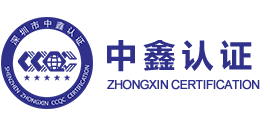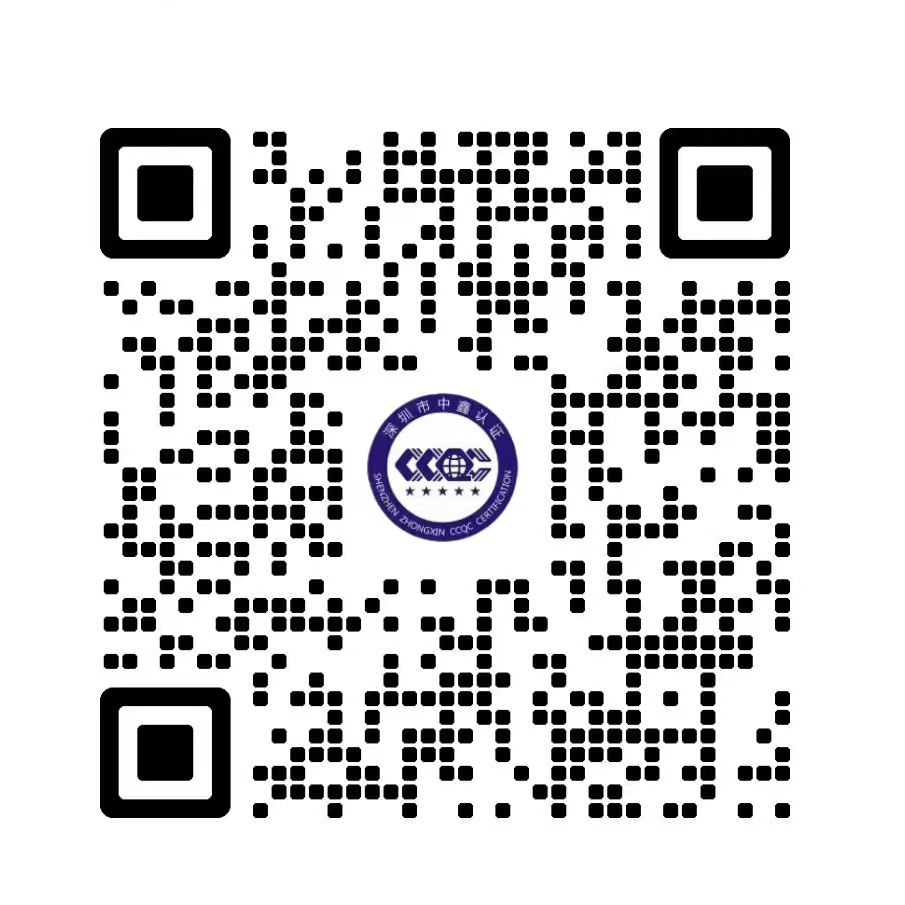This is the correct way to open quality control in the production process!
Date:2018-08-23Edit:Zhongxin CertificationView:5527次Link:Zhongxin Certification
Product quality is the lifeline for the survival and development of enterprises. This article aims to use the "Heinrich's Law" as a reference to identify key indicators in the manufacturing process, continuously monitor its operational quality through data analysis, accurately identify quality anomalies and trends, eliminate hidden dangers in the product manufacturing process, avoid accidents that cause huge losses to the enterprise, and lay a solid foundation for the quality management of the enterprise.

The production system of manufacturing enterprises is the main carrier for building competitiveness, and product manufacturing process quality management is an important function of enterprises. Its functional strategy meets and serves the overall strategy of the enterprise, and therefore it is at the heart of enterprise functional management. The construction of its process control capability, whether good or bad, is a major guarantee and cornerstone for the survival and development of enterprises, as well as a key task for winning future competition.
The essence of production quality process control is to organize effective production, accurately identify and manage potential quality hazards in the product manufacturing process, and continuously improve the driving force of self continuous improvement. It is the process of continuously improving the management system. However, in reality, due to the management oriented towards production and manufacturing results, we are completely unaware of potential quality hazards, and even numb to them. This leads us to neglect the control before and during production, resulting in frequent production quality accidents. Management personnel cannot accurately judge the operation status of quality control, and the drive for process rectification is weak. The Heinrich rule can be used to summarize its causes: "Behind a major accident, there must be 29 minor accidents and 300 potential hazards
Strengthening the quality control of the production process means effectively identifying potential hazards caused by inaccurate production organization, uncoordinated process order, untimely information transmission, unclear division of rights and responsibilities, and unreasonable analysis tools, in order to prevent the occurrence of major and catastrophic production quality accidents.
Lock in quality strategic elements and implement process control strategies
Focusing on the primary task of "building the core competitiveness of enterprises", we will conduct in-depth research on the management methods, control measures, and evaluation systems of production, process, quality inspection, and other links. Following the control principles of "avoiding virtuality and being practical, avoiding authority and being reasonable, and avoiding roughness and being precise", we will guide the development and implementation of business activities such as production scheduling, process control, and quality supervision in the manufacturing system.
The refinement of the homework system "is based on the enterprise standard system, strengthening the key processes corresponding to key positions such as production scheduling, operators, quality inspection, technology, and workshop management. It realistically reflects the performance of their duties in terms of compliance with regulations, procedural fulfillment, and standard execution. The result indicators of job responsibilities are implemented at the job site and key links, and the management principle of" whoever is in charge is responsible "is implemented in place.
'Timely and effective supervision' refers to strengthening the daily investigation and management of hidden dangers, identifying and sorting out problems and hidden dangers in a timely manner, conducting in-depth analysis, and urging responsible units to take targeted measures and rectify them in a timely manner. We must attach great importance to abnormal situations that occur during production process management and quality supervision operations, and strictly adhere to the "four no let go" principle, which means not letting go of unclear causes, responsibilities, hidden dangers, and measures to improve management level.
Improving precision in management "refers to taking the smallest unit of the process as the object, fully utilizing various information collected and organized during the production operation process, and using integration, comparison, analysis and other means to objectively reflect the control status of the production process in real time. Establish an evaluation system based on work indicators to assess the production, process, and quality control work of cigarette factories. Continuously promoting the optimization of standards and their execution processes, forming a self driving ability for continuous improvement, gradually improving production control accuracy and process management level.
Realistic process information, identifying quality hidden
The production process is composed of several production operation points, which continuously output production data information throughout the entire process. These data are the logical chain that connects the production process, the most intuitive and objective reflection of work results, the most effective clue for identifying process fluctuations, and strong evidence for continuous improvement and enhancement.
Identify key links in the production process, accurately depict production process information, establish a rigorous data collection network, design rigorous data analysis models, and develop rigorous data evaluation rules to promote the rigorous operation of the process control system.
Realistic production process quality information is to identify key links in the production process, establish a quality control index system for the production process, standardize the collection methods and frequencies of related data around the indicators, and provide standardized and accurate basic data for the discrimination of production process operation status, enterprise goals, benchmarking management, and other work. This involves establishing a rigorous data collection network, designing rigorous data analysis models, and formulating rigorous data evaluation rules to promote the rigorous operation of the process control system.
Effectively monitor the measuring and testing instruments used in the production process to ensure the accuracy of data measurement, and establish an objective and timely data collection network through information technology. Implement classified management for process inspection projects, determine the confirmation cycle for each category of project, and verify the compliance confirmation system between process control results and standards. The process execution rate reflects the ability of the processing process to ensure product quality. Based on the characteristics of the production process, establish mathematical analysis models for indicators, indicators and indicators, and indicators and standards. Use charts and graphs to visually reflect the operating status of the production process. Accurately identify abnormal and fluctuating factors in the process to basic units such as processes, batches, and indicators. Timely discover product quality abnormalities or trends, track and manage the entire process, and clarify defect descriptions in a timely manner.
Quality screening and daily settlement, continuous follow-up on hidden danger rectification
In process control, identifying and solving specific problems is only the beginning of control. The core element is to improve the driving force for continuous improvement in the production process and reduce the probability of quality accidents through the rectification of problems.
The appearance of quality accidents varies greatly, but there are several main reasons for investigating their causes. Firstly, there is an unclear definition of rights and responsibilities, resulting in multiple management and no one being responsible in the business process. The reason is that management standards do not reflect the management principle of "whoever is in charge is responsible". Secondly, the inadequate implementation of standards and the lack of effective control measures over the production process have led to a lack of binding force on on-site operations, especially in terms of management standards. The third reason is the lack of systematic statistics, analysis, and standardized transmission of basic information, which leads to information distortion, delayed transmission, and other phenomena, making it difficult to accurately and timely judge the quality operation status of the production process.
Details determine success or failure. All links related to production quality operation should participate in continuous improvement activities to enhance production efficiency and improve production results. The daily clearing and settlement of process quality control results means that each level of the process, team, workshop, and factory should timely and effectively organize, analyze, and summarize the daily production data on the production site, so that production, process, and quality management personnel can track the production operation status in real time, grasp the trend of indicator changes, and clarify the traceability path of production process data, confirm the performance of responsible persons, and provide prompt for identified problems in the first time. Relevant personnel can timely discover process hazards based on the prompt information, trigger the rectification process, and actively take measures to eliminate hazards.
Through quantitative evaluation, the identification and investigation of daily hidden dangers can intuitively reflect the level of quality control in the production process, facilitate the discovery and identification of control shortcomings, promote the development of enterprise benchmarking work, and use the results of the production process control evaluation module as input for the evaluation strategy of production process management. By using performance management, evaluation activities, and other means, information support can be provided for production and operation decision-making management in a hierarchical and multi-dimensional manner, and diagnostic basis can be provided for scientifically and reasonably solving quality management problems, making management decisions more practical and targeted, thus promoting the continuous progress of enterprise quality control.
Product quality control in the production process is to ensure that the production process is in a controlled state, and to analyze, diagnose, and monitor the operational techniques and production processes that directly or indirectly affect product quality in the production, installation, and service processes.
Main content:
① Material control, traceability, and identification. Corresponding regulations should be made for the types, quantities, and requirements of materials and parts required in the production process to ensure the quality of process materials and maintain the applicability and adaptability of products during the process; Identify the materials during the process to ensure traceability of material identification and verification status.
② Control and maintenance of equipment. Corresponding regulations should be made for equipment, tools, measuring instruments, etc. that affect product quality characteristics. Their accuracy should be verified before use, and they should be stored and protected reasonably between two uses, and regularly verified and recalibrated; Develop a preventive equipment maintenance plan to ensure the accuracy and production capacity of the equipment, in order to ensure continuous process capability.
③ Control and management of key production processes. Focus on controlling the special skills and processes required for equipment maintenance and operation for product characteristics that are difficult to measure; Timely improve and correct deficiencies in the process, monitor, control, and verify process parameters at appropriate frequencies during production to ensure that all equipment and operators can meet the needs of product quality.
④ File control. Ensure that the requirements of process planning are met and that all process related documents used during the process are valid versions.
⑤ Process change control. Ensure the correctness and implementation of process changes, clearly define change responsibilities and authorities, evaluate products after changes, and verify the expected effects of changes.
⑥ Control of verification status. Use appropriate methods to identify the verification status of the process, distinguish unverified, qualified, or unqualified products through identification, and identify the responsibility for verification through identification.
⑦ Control of non-conforming products. Develop and implement non-conforming product control procedures, promptly identify non-conforming products, clearly label and isolate non-conforming products for storage, determine the handling methods for non-conforming products and supervise them to prevent customers from receiving non-conforming products and their unintended use, and avoid unnecessary costs from further processing non-conforming products.
Control method:
① Develop and implement specialized quality control procedures;
② Strengthen inspection and supervision;
③ Fill in detailed quality records, clarify responsibilities, and ensure traceability;
④ Strictly control the handling of non-conforming products;
⑤ Strengthen the maintenance and upkeep of equipment;
⑥ Using statistical control methods for production process control, such as control charts, statistical sampling procedures, and plans.
Strictly speaking, a good process is not solely the responsibility of the production unit. The so-called good process involves many aspects: this needs to be analyzed from 5M1E.
To ensure stability in the process, people must first be stable, which requires a skilled operator, a qualified inspector, and a skilled equipment technician to complete the process.
The process needs to be stable, that is, our method of operation is correct.
Equipment needs to be stable. Without a well functioning production equipment, product stability is just an empty promise.
The raw materials need to be qualified. It's very simple to build a house on the desert, which is unstable.
The monitoring methods should be fully satisfied. The measurement method needs to be stable.
Of course, it refers to the environment, and the requirements for the environment are closely related to the selection of products. If I were making bricks, I probably wouldn't have any requirements for the environment, but if I were making gold nuggets, my requirements for the environment would be different.



